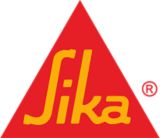Sika puts safety first. Working safely is not only a program but also a way of getting things done. Providing a healthy and safe work environment for employees, monitoring health and safety standards of suppliers, and ensuring the safe use of products by customers are key elements in Sika’s worldwide success.
As part of the Sika Strategy 2028, Sika’s commitment to health and safety has been further elevated. The company commits to creating a workplace where safety is a value embedded in every action, decision, and interaction. Sika’s vision is a future where every employee, contractor, and stakeholder return home safely, every day. Through innovation, education, and collaboration, Sika aspires to eliminate all accidents, prioritize the well-being of the workforce, and set an industry-leading benchmark for safety excellence.
Relevant links
Responsibilities and Management Systems
General Managers bear full responsibility for the implementation of labor practices and safe working conditions in Sika’s local operations. They report to area and regional management, who oversee the development of regional strategic plans and targets in accordance with the Group strategy.
At local level, all General Managers, Operations Managers, and line managers are responsible for meeting Sika’s occupational health and safety targets and for setting local targets accordingly. Since 2023, the compensation scheme of Group Management and Sika Senior Managers has been linked to the safety performance of the company.
Sika maintains a Corporate Management System (CMS) which applies to all Sika locations and employees and fulfils the requirements of ISO 45001 “Occupational Health and Safety Management System” and ISO 9001 “Quality Management System”. Local Sika companies implement their own Sika Management Systems based on the CMS, and local regulatory and legal requirements. Newly acquired companies are integrated under the CMS as part of the integration approach.
Hazard Identification, Risk Assessment and Incident Investigation
Sika considers hazard identification to be the basis of safe work, and applies the STOP principle (Substitution, Technical measures, Organizational measures, Personal protective measures) to all risk and incident investigations. Sika companies are required to regularly assess hazards and analyze risks within their premises, and operations, and to define corrective and preventive measures accordingly. Each site conducts adequate risk assessments within the workplace. These are led by EHS professionals and serve to give a comprehensive and valid judgment regarding the protection level of occupational health and safety. Risk analyses are reviewed when new information becomes available, e.g., new legal requirements, changes to systems, equipment, raw material, incidents, accidents, near misses, etc.
It is the responsibility of all employees to ensure that accidents or incidents, as well as near misses, are promptly reported to line management to ensure timely investigation and corrective action. All incidents that happen within Sika entities and premises involving Sika employees or temporary employees, as well as contractors and visitors, are included in the scope. Additionally, incidents involving Sika employees working off-premises, e.g., customer sites, construction sites, business travel, are in scope. Incidents with high or potentially high severity (including all accidents resulting in lost time) must be reported within 24 hours through a central notification system. Investigation and root cause analysis are significant drivers of continuous improvement in Sika health and safety performance.
Each incident is investigated, a root cause analysis performed, and lessons learned are shared across the organization for assessment at other locations and implementation of risk mitigation measures. Since January 2023, this process has been fully supported by the Global EHS Incident Management tool. The latter enables all employees to report, manage, analyze, and share EHS observations, near misses, and incidents.
Training on Health and Safety
Occupational health and safety trainings are organized at various levels withing the company for Sika employees and external workers:
At Group level, 13 e-learning modules have been developed since 2022 and deployed. They cover the “Sika Life Saving Rules” and the 12 “Sika EHS minimum requirements”. All employees are required to complete the “Sika Life-Saving Rules”, “General Site Rules”, “Personal Protective Equipment”, and “Rules for Visitors” training. The remaining e-learnings are elective based on the activity of the employee and are included in local curricula. New e-learnings covering process safety topics and updates to existing modules have been developed during the second half of 2024 for issue in early 2025.
At local level, new employees receive safety induction training, embedded in the introductory program, which covers safety policies, guidelines, and procedures. Regular refresher training on health and safety is also performed. In addition to the mandatory health and safety induction training sessions, local management teams are responsible for setting up and deploying specific additional health and safety training. Each country develops a program to ensure employees are trained to these standards and the adherence to local regulations. Temporary staff also fall under these requirements.
For contract workers, both the contracted party and Sika must be fully aware of and prepared for potential hazards. Contractors need to demonstrate a clear understanding of the task being performed and have a system to understand and control the risks. Training needs assessment, content and effectiveness are completed at local level under EHS Manager, HR, and General Manager responsibilities. The same safety rules and trainings apply to contractors as for employees.
Customers Health and Safety
Customer health and safety is crucial for Sika and is factored into product development processes (formulation work, system design, etc.) where product characteristics are determined. Moreover, Sika ensures that its customers are fully aware of handling requirements so that they can work safely. For this reason, customers and product users can attend application training sessions to learn the proper use of the products.

